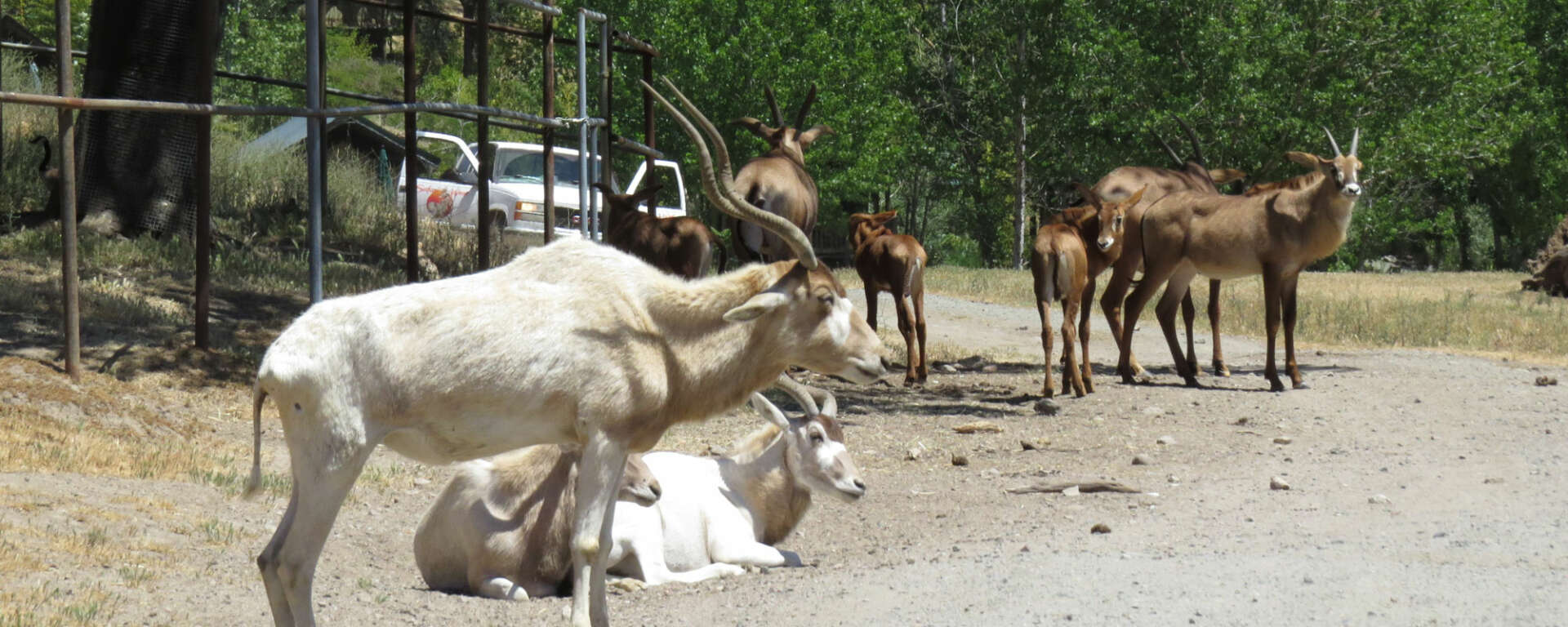Animal Welfare Statement
At Safari West it’s all about the animals. Always has been, always will be.
Animal Caregivers and the Welfare of Those in their Care
Many of us have domestic companions, dogs, cats, hamsters, birds, fish to name just a few. If asked how we look after their welfare some obvious answers come to mind: quality food, clean plentiful water, veterinary care, a warm dry place to sleep. Some might also say, “I walk my dog every day and throw the ball for her for fifteen minutes,” or, “My cat loves her feather on a string and begs me to play with her by bringing it to me while I am watching television.” If any of these statements resonate with you, you have a good understanding of what animal welfare means: not just physical but psychological and emotional health as well.
At Safari West, our animal caregivers have the same goals: to provide their charges with a rich, complex and changing environment. Inspired by the AZA (Association of Zoos and Aquariums) recommendations Safari West has a formal Animal Welfare Program in place to ensure that we meet the highest standards for animal habitats, nutrition, health and social behaviors. This assessment is ongoing for the life of the animal and is reassessed on a regular basis.
One of the most important things that animal caregivers can provide their animals with is choice and control. How do they do that? One of the ways to enhance welfare is through environmental enrichment, some thing or some activity that provides the animal with the opportunity for natural behaviors and problem-solving-investigating and mental stimulation. The animal has the option to involve itself to whatever level it desires, or to ignore the item.
Often enrichment is part of another activity, such as social interaction with other animals or caregivers, feeding or training. Training can be intentional, to train for medical procedures, or indirect: the caregiver has a calm manner and does not look directly into the animal’s eyes as that can be perceived as a threat.
One of the challenges that animal keepers meet is habitat design. The habitat should be stimulating, varied and meet any special needs that an animal might have. This might include the need to climb, to hide or to meet the needs of an animal with restricted mobility. Animal caregivers constantly strive to ensure that the needs of the animals they care for are not just met but exceeded.
Animal caregivers need patience, commitment, knowledge and skill. They must be able to communicate with their colleagues and supervisors as well as the animals they care for and recommend or request changes in care when appropriate. Most importantly, they must respect the dignity of the animals in their care. When watching the interaction between the caregivers and their animals, this respect is obvious.

